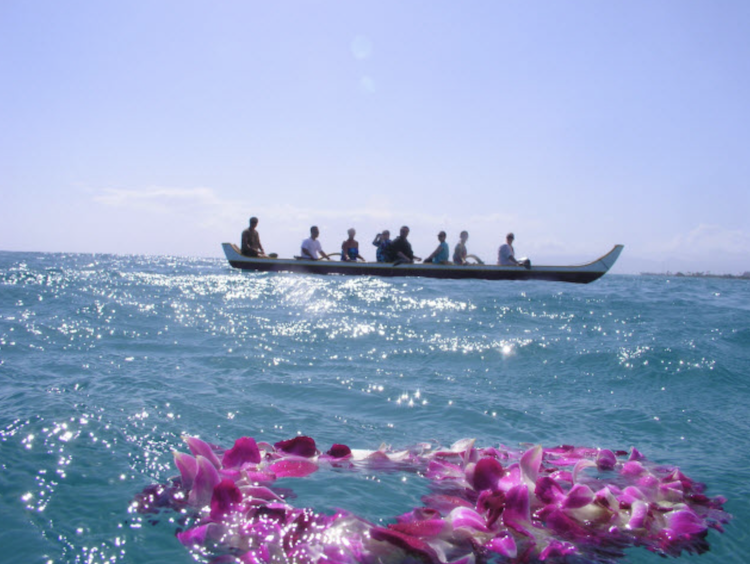There are many stunning places throughout the world, with outstanding landscapes and temperate weather.
One such place is Hawaii, with its weather and topography both having a major influence on the way in which the inhabitants conduct their funerals.
Funeral customs in Hawaii can either consist of traditional or modern elements, or even both. Some ancient customs are still used in modern day Hawaiian funerals such as the burial of bones.
Traditionally in Hawaiian culture, bones were viewed as the most important part of the body as bones are believed to contain the deceased’s iwi (spirit) which remains alive following death. Hawaiians would wash, wrap, and bury the bones in secret caves to prepare them for the afterlife.
Prior to a traditional Hawaiian funeral taking place and body visitations, the deceased’s body is washed with salt water which acts as a preservative allowing the body to remain home for two to three days.
Following this procedure, a dress is created and made entirely from strips of tree bark which the body is later placed into ready for the funeral. After the body has been cleansed and dressed, the deceased’s loved ones gather for a banquet.
In contrast to the majority of funeral services where the atmosphere is solemn, Hawaiian funerals place a central focus on celebrating the individual’s life. The service consists of cheerful dancing and singing, including the Hula dance which is carried out by the deceased’s relatives.
For people who wish to embed traditional elements into the funeral, prayers are often performed in the form of a chant, which is believed to push the deceased’s spirit from their body. In some instances, food is even provided for the spirit to please them and the other spirits of their previous loved ones.
One of the most popular ways to honour the deceased following the funeral in Hawaii is through traditional lei throwing.
Lei throwing is a ritual where the deceased’s family and friends throw lei (garlands of flowers) into the water, whilst reflecting upon the memories of their loved one.
Lei throwing can occur in two ways; whilst some people take individual flowers off the lei and scatter them in the sea, others will place the whole lei into water. This practice is not only perceived as a powerful way to pay respect to the deceased, it also creates a beautiful sight in the water.
Meanwhile, some inhabitants take part in Paddle-Out Ceremonies, which are native to Hawaii, and they almost always involve the traditional throwing of lei.
Hawaiian funerals place a central focus on celebrating the individual’s life
A Paddle-Out is a floating memorial service which takes place in the middle of the ocean. Although this type of memorial service was traditionally established to commemorate the lives of surfers, now anyone can gather in a circle in the water on their kayaks and surfboards. Within the memorial service, the people discuss cherished memories of their loved ones together before throwing lei into the sea.
Furthermore, more recently Hawaii has adapted a new method to honour the deceased which mirrors Toro Nagashi, the Japanese Floating Lantern Festival.
Since the early 21st century, each year on Memorial Day, lanterns are sent out towards the ocean to commemorate around 40,000 people’s lives.
The lanterns contain personalised messages or prayers, written on the sides, from the deceased’s family and friends. Before the lanterns are set afloat, a Pu (conch shell) is played which is followed by Japanese drums and a traditional Hawaiian chant.
This procession is believed to purify and bless the area, preparing it for the procession of the event. This year the event was held at the Ala Moana Regional Park in Honolulu and generated a crowd of thousands.

